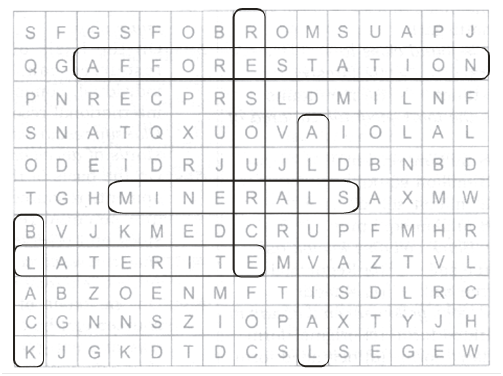Solve the puzzle by following your search horizontally and vertically to find the hidden answers.

(i) Natural endowments in the form of land, water, vegetation and minerals.
(ii) A type of non-renewable resource.
(iii) Soil with high water retaining capacity.
(iv) Intensively leached soils of the monsoon climate.
(v) Plantation of trees on a large scale to check soil erosion.
(vi) The Great Plains of India are made up of these soils.

(i) Resource: These natural endowments in the aforesaid forms are called resources.
(ii) Minerals: Minerals are found naturally and are utilized in a greater speed than it can renew. So it falls under the non-renewable category.
(iii) Black: It has the highest water retaining capacity.
(iv) Laterite: The Laterite Soil develops in areas with high temperature and heavy rainfall.
(v) Afforestation: Plantation of trees on a large scale to check soil erosion.
(vi) Alluvial: This is the most widely spread and important soil. The entire northern plains are made of alluvial soil. These soils contain adequate proportion of potash, phosphoric acid and lime.